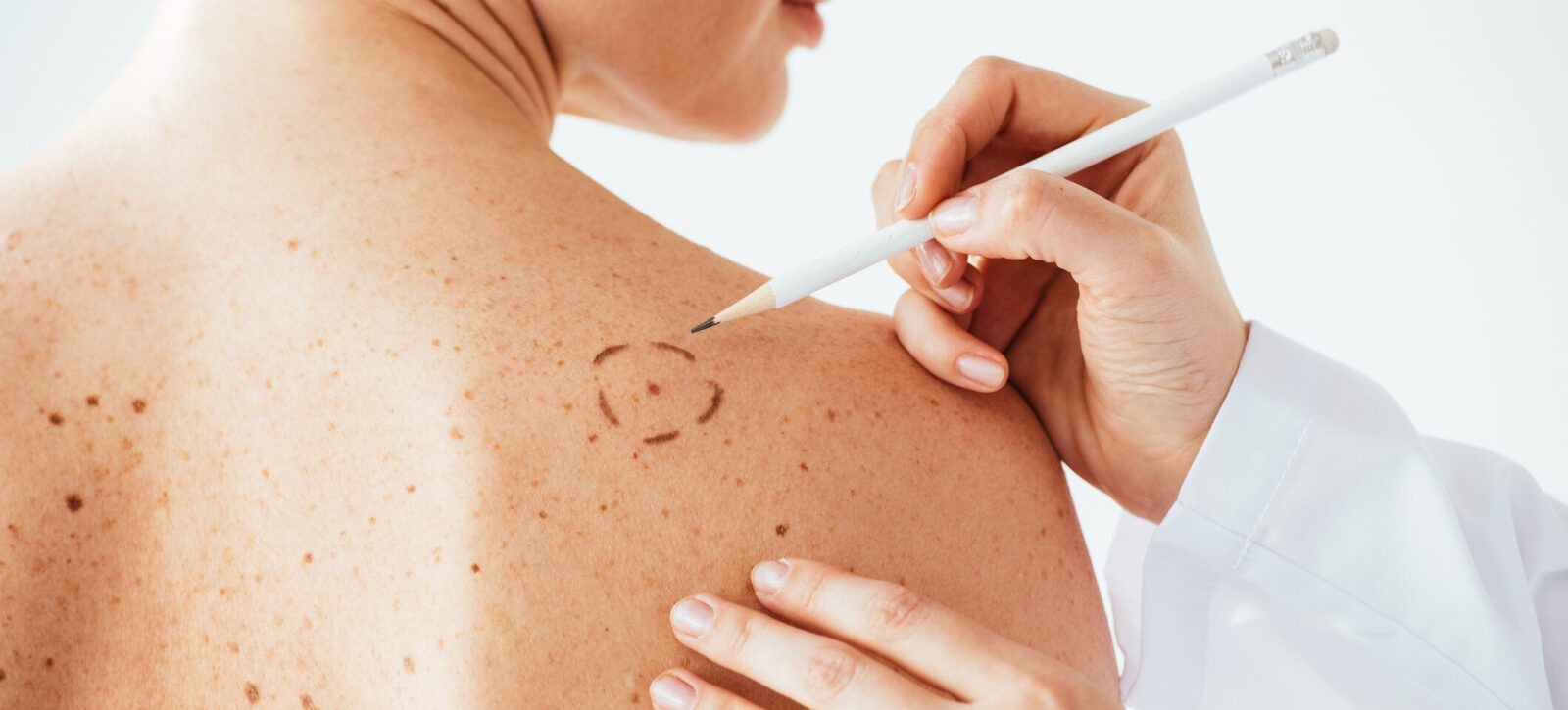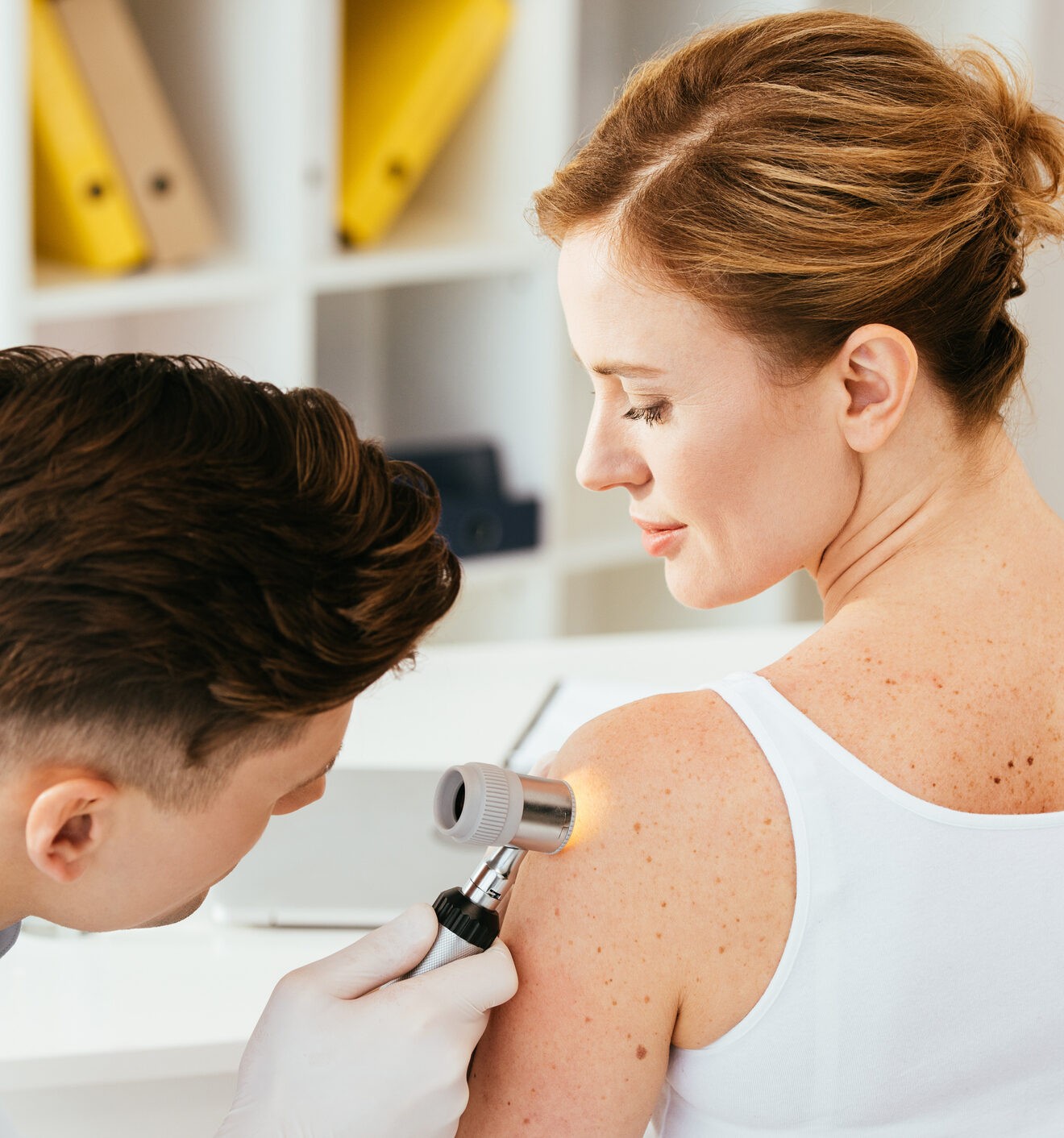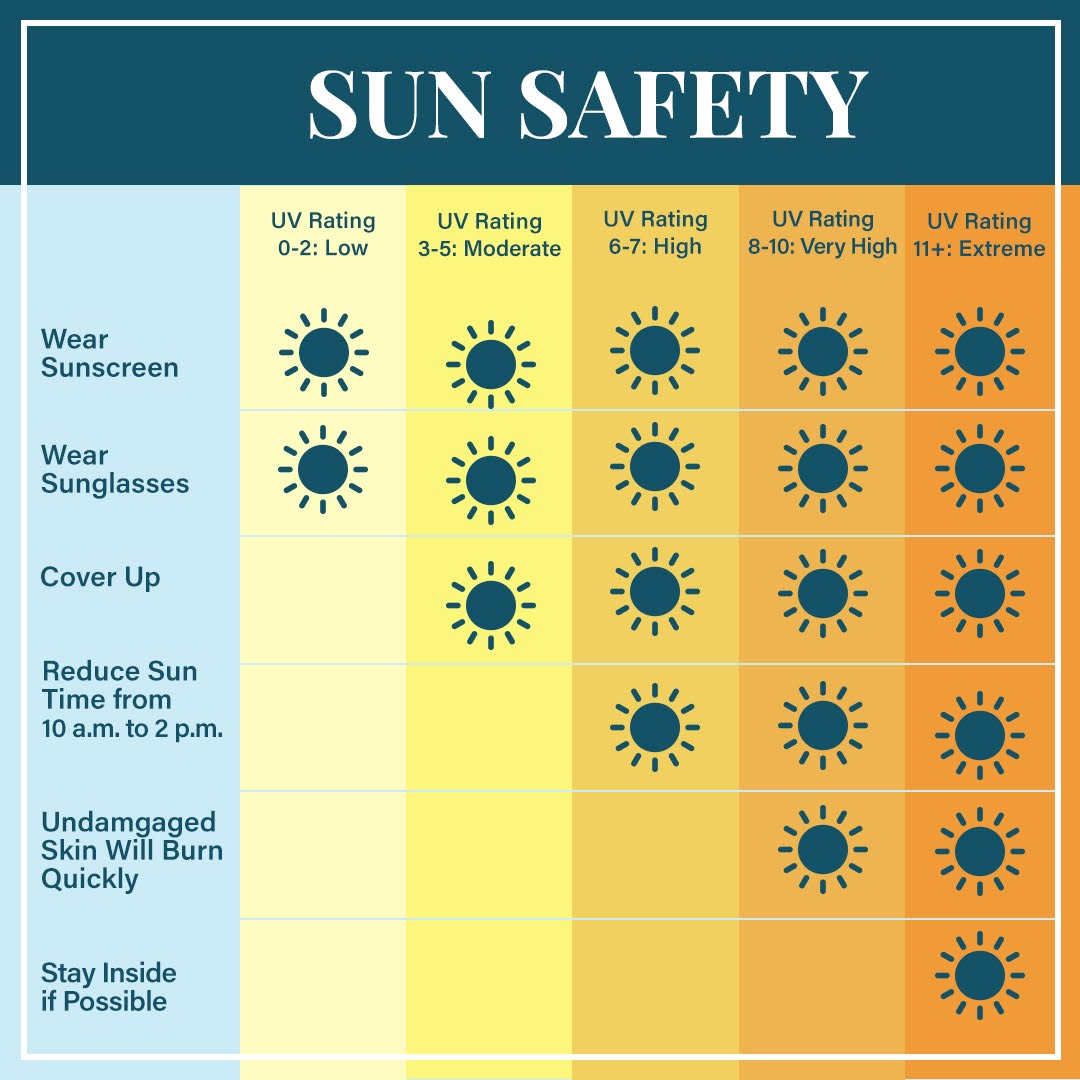What Is Skin Cancer?
Skin cancer occurs when a group of skin cells grow abnormally anywhere on the body. Obtaining a proper diagnosis for your specific type of skin cancer is crucial to ensure you receive early and appropriate treatment.
What Causes Skin Cancer?
Although doctors cannot always pinpoint what causes skin cancer, they can often trace it to prolonged sun exposure. According to an October 2019 article published by the Cleveland Clinic, up to 80% of sun exposure occurs during childhood.
How Can I Prevent Skin Cancer?
According to the Centers for Disease Control (CDC), most skin cancers occur from too much exposure to the ultraviolet (UV) sun rays, sun lamps & tanning beds. Fortunately, with a few lifestyle changes skin cancer is largely preventable. The CDC and the Skin Cancer Foundation (SCF) recommend that people limit direct sun exposure and eliminate artificial sun sources.
Melanoma
The most serious form of skin cancer
Melanoma can be deadly if it spreads to other organs. However, the recovery rate is one of the highest among all types of cancer if detected and treated early. Here are some other facts to keep in mind about the link between sun exposure and skin cancer:
- Your risk of developing skin cancer due to prolonged sun exposure is just as high during the winter as it is during the summer. You need to take the same precautions to protect your skin, such as wearing sunscreen and covering as much skin as possible, when you know you will be outdoors for an extended time.
- Certain antibiotics can increase the sensitivity of your skin to sunlight. Be sure that you understand all potential side effects before starting any medication and adjust your sun exposure accordingly.
Regardless of the season, applying a sunblock product with a Sun Protection Factor (SPF) of at least 30 helps prevent sunburn. You also want to wear a hat, sunglasses, and protective clothing and stay in the shade as much as possible when the sun’s rays are strongest between 10:00 a.m. and 3:00 p.m.
Basal Cell Carcinoma (BCC)
As the most common type of skin cancer, BCC is rarely fatal. The key is to remove it from the outer layer of skin where it has developed to avoid it penetrating into bones or nerves and causing permanent damage.
BCCs typically develop after years of sun exposure and are most common in people with fair skin. Unlike melanomas that typically start as moles, BCCs usually appear as a pinkish patch of skin, a bump resembling a pearl, or a round growth that is fleshy in color.
The most common areas of the body for BCC to develop include:
Other Types of Skin Cancers
Cutaneous T-cell Lymphoma
A rare blood cancer, begins in skin cells.
Dermatofibrosarcoma Protuberans (DFSP)
Begins in the middle layer of skin, but rarely spreads to other parts of the body.
Merkel Cell Carcinoma
An aggressive and rare type of skin cancer diagnosed in just 2,000 people each year.
Sebaceous Carcinoma
A rare and aggressive cancer, with most tumors beginning on the eyelid.
Since skin cancer can affect anyone, everyone should get into the habit of checking their skin for irregularities using the ABCDE method.
- Asymmetry
One-half of the mole or spot on the skin appears markedly different than the other half.
- Border
The border of the mole or spot is poorly defined or appears irregular.
- Color
The spot on the skin displays more than one color. Black, brown, tan, red, white, and blue are all common skin cancer colors.
- Diameter
When diagnosed, most melanomas are at least the size of a pencil eraser, but they can be smaller. A spot that changes in size is always cause for concern.
- Evolving
One spot looks considerably different than other spots or has changed in color, shape, or size over time.
The following attributes or behaviors can also increase the risk of skin cancer:
If you recognize any of these risk factors, be sure to schedule a routine skin examination with Southern Dermatology. Early detection and treatment of skin cancer can make a life-saving difference.
- Fair skin and/or freckles
 50 or more moles on the body
50 or more moles on the body- Weakened immune system
- Precancerous skin conditions
- Regular use of tanning beds
- Fragile skin
Schedule an Appointment
The CDC and SCF recommend that adults visit a dermatologist at least once a year for a professional skin check. Those with more than a few risk factors or who have had skin cancer in the past may need to schedule more frequent appointments.
Know Your Risks
Sun Exposure and Skin Cancer
Basal cell carcinoma and squamous cell carcinoma are non-melanoma skin cancers and the most common types to develop in response to cumulative sun exposure. In contrast to cumulative sun exposure, people who experience at least one severe sunburn before age 18 are at higher risk of developing melanoma later in life.
Age, Heredity, and Other Common Risk Factors for Skin Cancer
People over age 50 develop both non-melanoma and melanoma types of skin cancer more often than their younger peers, despite younger people spending more time in the sun. The reason for this is that most skin cancers grow slowly over time and can take decades to finally show symptoms. Skin cancer can also occur due to a genetic mutation passed from parent to child.Most people understand that spending too much time in the sun can cause premature aging but are often less aware of its association with skin cancer. They usually do not think about protecting their skin during the winter or on a rainy day because they assume the sun is not dangerous in cold or cloudy weather. The sun’s UV rays can be intense even when the temperature is below zero, or it continues to rain.
How to Determine Your UV Ray Exposure Risk
Most people understand that spending too much time in the sun can cause premature aging but are often less aware of its association with skin cancer. They usually do not think about protecting their skin during the winter or on a rainy day because they assume the sun is not dangerous in cold or cloudy weather. The sun’s UV rays can be intense even when the temperature is below zero, or it continues to rain.
Practical Tips for Sun Safety
Be certain to follow each of these guidelines to protect your skin from UV-ray damage
- Apply a sunscreen product marked with a Sun Protection Factor (SPF) of at least 30 approximately 30 minutes before going outside. Reapply the sunscreen every two hours as long as you remain outdoors, and choose a water-resistant type of sunscreen if you plan to go swimming. Remember to apply every day, all year long.
- Use UV Alert stickers or set an alarm on your phone to remind you when to reapply your sunscreen.
- Wear a wide-brimmed hat and sunglasses to protect your face, neck, ears, and eyes.
- Avoid being in the sun directly between 10:00 a.m. and 4:00 p.m. when UV rays are most intense.
- Remain in the shade as much as possible.
- Avoid UV tanning beds and lying in the sun to tan your skin.
- Wear lightweight, breathable clothing in the summer months to avoid overheating.
- Do not allow babies to spend time in the sun until they are at least six months old, at which point a parent should apply sunscreen to any exposed areas of skin.
- Examine your skin at least once a month and report any changes to your dermatologist as soon as possible.




